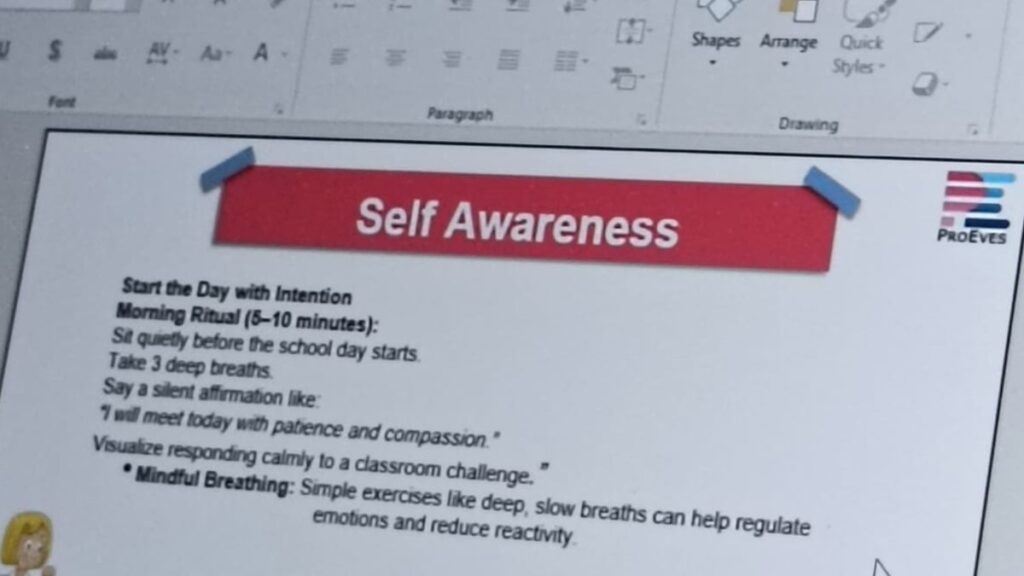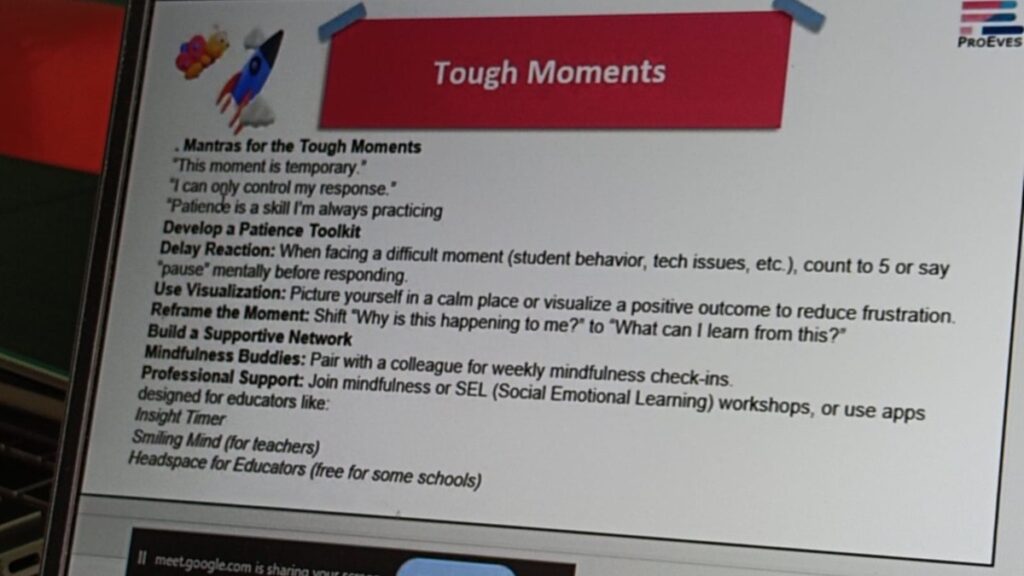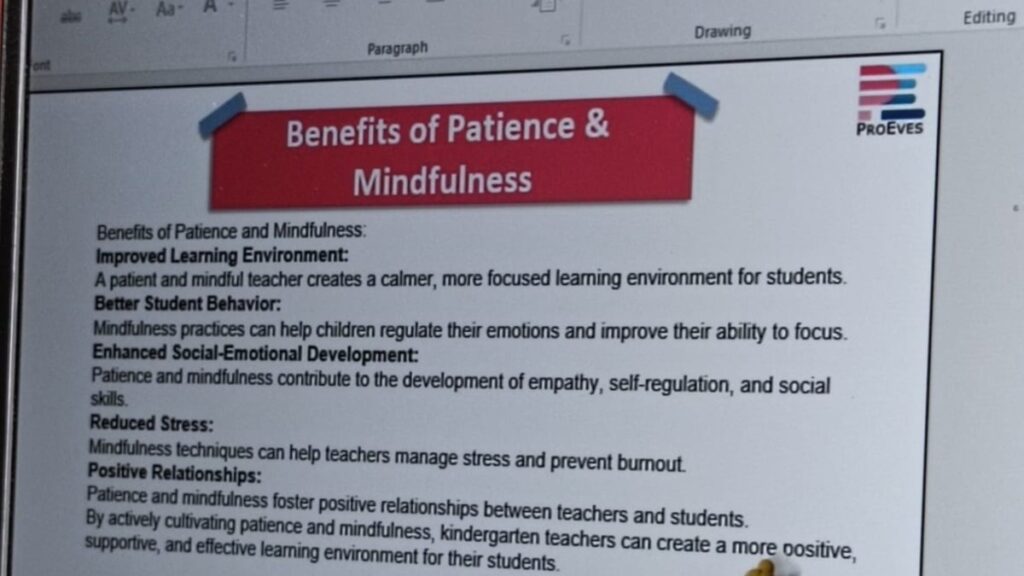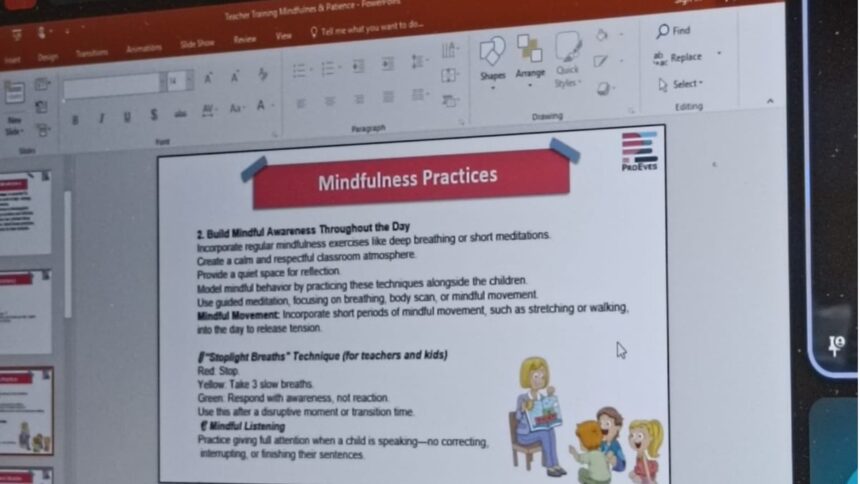Date: 21st August 2025
Format: Online Session
Building Patience and Mindfulness
An insightful online session was held on Building Patience and Mindfulness for teachers working with playschool and kindergarten children. The discussion highlighted practical strategies to help educators manage emotions, respond with empathy, and create nurturing classroom environments where young learners can thrive.

I. Why Patience and Mindfulness Matter
In a playschool setting, every day is filled with curiosity, energy, and emotions. Children are just beginning to learn how to manage feelings, wait their turn, and focus on tasks. Teachers, therefore, operate in a dynamic and high-energy environment where patience and mindfulness are essential. These qualities empower teachers to handle unexpected challenges with calm, while also fostering trust and security for children.
II. Cultivating Self-Awareness
The foundation of patience begins with self-awareness. Teachers were encouraged to begin each day with:
- A few minutes of quiet breathing.
- A simple affirmation such as “I will meet today with patience and compassion.”
- Visualization of calm responses to potential challenges.
This daily practice helps regulate emotions, reduce reactivity, and set a positive tone for the classroom.
III. Mindfulness Practices in the Classroom
Mindfulness can be integrated seamlessly into the school day through:
- Deep breathing during transitions or moments of stress.
- Soothing classroom environments with soft voices, calming music, and quiet spaces.
- Short guided meditations focusing on slow breathing.
These practices encourage emotional regulation and help children feel safe, calm, and engaged.
IV. Strengthening Patience Muscles
Patience is built over time. Teachers can:
- Pause before responding to misbehavior.
- Reframe challenges by asking, “What is the child trying to communicate?”
- Stay mindful of tone and body language.
- Recognize that progress takes time for both students and teachers.
Benefits include a calmer classroom, improved student behavior, reduced stress, and more focused learning.

V. Handling Tough Moments
When faced with challenges, teachers were reminded:
- “This moment is temporary.”
- Pause, breathe, and respond intentionally.
- Visualize positive outcomes and lean on peer support.
VI. Mindfulness with Students
Practical methods to instill patience in children include:
- Using games that require turn-taking.
- Introducing short mindfulness practices during class.
- Allowing “wait time” in lessons.
VII. Reflection and Growth
After class, teachers were encouraged to reflect on questions such as:
- What challenged my patience today?
- How did I respond?
- What small change will I carry forward tomorrow?
This continuous self-reflection ensures teachers grow as mindful, compassionate educators.

Conclusion : building patience and mindfulness with little learners.
The session emphasized that patience and mindfulness are not innate traits but skills cultivated through daily practice. By applying these strategies, teachers can create classrooms filled with calm, care, and effective learning for little learners, thereby building patience and mindfulness with little learners.




